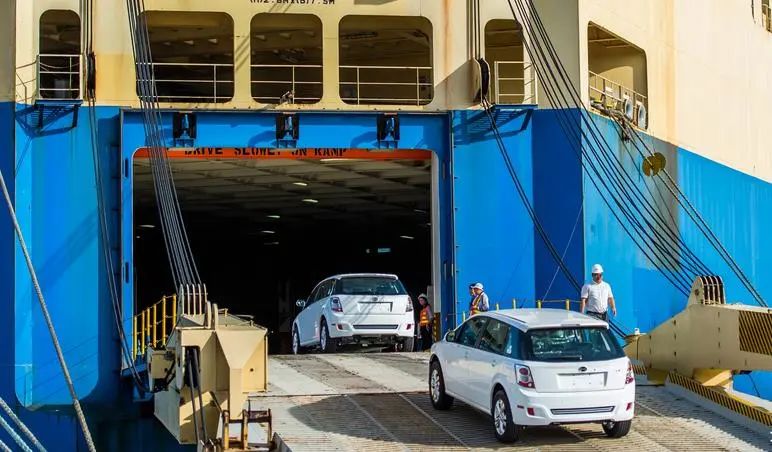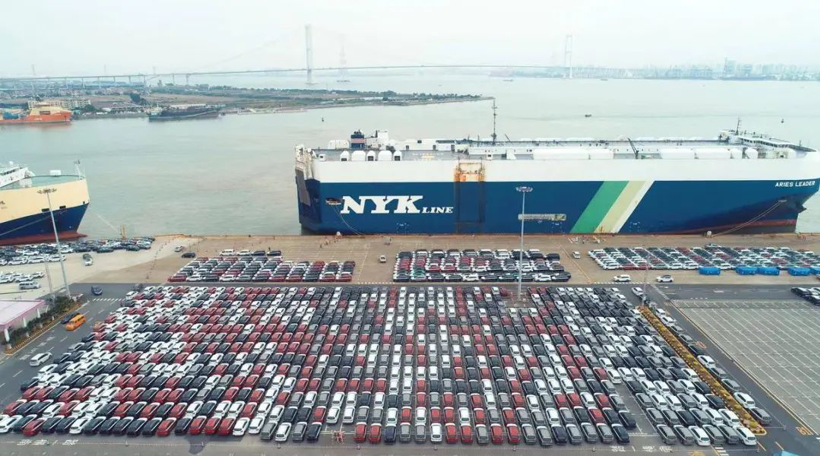Why do car companies get together in Thailand?
On September 16, Neta Auto signed a comprehensive strategic cooperation agreement with PTT, the largest petrochemical manufacturer and trader in Thailand. The two parties will work together to develop the new energy vehicle market in Thailand. Prior to this, the right-hand drive version of Neta V was launched in Thailand, and the first overseas 3.0 image experience space opened in Thailand.
On September 8, BYD signed a contract with WHA Weihua Group Volkswagen Co., Ltd. and formally signed an agreement on land subscription and factory construction. Prior to this, BYD and local partner RÊVER held a brand conference in Bangkok, announcing its official entry into the Thai passenger car market.
In just one month, two Chinese electric vehicle companies have quickly deployed the Thai market in terms of sales and manufacturing. Why did this country with a small land area, low GDP, and low population suddenly become a favorite of the auto industry? In fact, Thailand is striving to become the automotive manufacturing hub of the ASEAN market.

In addition to Neta and BYD, SAIC and Great Wall Motors have already taken the lead in entering the Thai market and have achieved good results. Similarly, these two Chinese car companies also rely on new energy vehicles to rapidly rise in Thailand. Including Tesla, after failing to enter the Indian market, it also turned its attention to Thailand.
There is no doubt that with the advent of the electrification era, whether it is for an automobile brand or a single country, only by seizing the wave of new energy can it seize the first-mover advantage and development momentum in the industry and globally. Today's Thailand wants to maintain its position as a car manufacturing hub in Southeast Asia, so it also needs to attract investment from automakers.
What's in Thailand?
Thailand does not have its own car brand, and the country's cars are basically produced by foreign car companies in local factories. Therefore, it is also the largest automobile producer and second largest automobile sales market in Southeast Asia, and the third largest automobile exporter in Asia after Japan and South Korea. At present, the car production in the local market is about 2 million units/year, and the sales volume is about 1 million units/year.
Since 2008, Thailand has formulated the development goal of the automobile industry to create "Eastern Detroit". Therefore, by imposing high tariffs on imported automobiles and local tax reductions to attract foreign investment, a complete automobile industry chain has been formed, providing a good environment for automobile manufacturing and sales.

However, the Thai market, like any other country in the world, has peaked and weakened slightly over time. While struggling to find a way out, the wave of electrification is on the rise, and Thailand is also firmly targeting this track. Similar to the previous policy promotion, Thailand has begun to formulate a series of incentive measures for the development of new energy vehicles.
For example, the import tariff of pure electric vehicles with a price of not more than 2 million baht (about 378,800 yuan) will be reduced by 40%, and the import tariff of electric vehicles priced between 2 million and 7 million baht will be reduced from 2022 to 2023. 20% annual decrease. In terms of consumption tax, imported electric vehicles will also be reduced from 8% to 2%.
In addition, in terms of taxation, it is stipulated that if the production of pure electric vehicles and the investment amount is not less than 5 billion baht, including 100% foreign ownership, freehold title deeds, exemption from corporate income tax for up to 8 years, etc., if the investment in research and development is Additional benefits are also available.
In terms of the battery industry chain for electric vehicles, Thailand currently has 18 projects under construction, involving battery production, module production, and module assembly. The total investment in battery-related projects in Thailand has reached US$39 million. For module production, there will be a certain reduction in import tax on raw materials, with a reduction of up to 90%.

On the other hand, the Thai government has also spent 2.923 billion baht as a car purchase subsidy to encourage consumers to buy and use electric vehicles. For example, for electric vehicles that meet the conditions, a price subsidy of 70,000-150,000 baht (about 13,300-28,600 yuan) is given, which can fully stimulate the activity of the country's pure electric vehicle market.
As we all know, imperfect infrastructure is an important obstacle to the development of electric vehicles. In order to maintain its leadership in the automotive industry, Thailand plans to attract 400 billion baht (about 80 billion yuan) of investment in the next few years and complete the goal of building 690 charging stations by 2036.
According to the plan of the Thai government, by 2030, the production of electric vehicles in Thailand is expected to account for more than 30% of the total production of automobiles. At present, nearly 30 automakers from around the world have entered the Thai market, with 100,000 employees. Inspired by policies such as the development of charging infrastructure and tax reduction for new energy vehicles, Thailand may become an important new energy vehicle market center in Southeast Asia.

In addition, Thai users have a high degree of acceptance of electric vehicles. According to public data, about 44% of users said they would consider electric vehicles when purchasing a car next. Moreover, due to geographical and cultural influences, Thai users have a high degree of acceptance of Chinese brands. . When Chinese car companies enter the Thai market, they can base themselves on Thailand to radiate the Southeast Asian market and further increase their global share.
from point to point
This year marks the 10th anniversary of the establishment of the comprehensive strategic partnership between China and Thailand. Just a few days ago, the 19th China-ASEAN Expo was successfully held. Relying on the good cooperation between the two parties, in the future, Chinese enterprises will continue to enter the Thai market, so as to realize the dream of China's auto industry going global.
For a long time, the strength of Japanese car companies has been very strong in the Southeast Asian market, including Thailand, with a share of 90% in some countries. But this is only limited to the era of fuel vehicles. In terms of electrification, Japanese car companies are generally slow to respond and rely on the promotion of hybrid models. Therefore, this gives Chinese car companies an opportunity.
It is reported that in Thailand's electric vehicle market, only two Chinese car companies, SAIC and Great Wall, hold about 70% of the share. With the rapid response of electric vehicles, Chinese automakers have broken through the highly concentrated market of Japanese brands. In 2021, SAIC MG and Great Wall successfully entered the top ten brands.

Due to the attractiveness of Thailand's policies, automakers in other countries are also increasing the deployment of electric vehicles in Thailand. However, in terms of performance, Japanese, Korean and European car companies are not as active as Chinese car companies. Since the total market volume in Thailand is not high, these car companies put more energy on markets such as China and Europe.
In China's local market, self-owned brand car companies rely on new energy to "change lanes and overtake", and this model is very likely to be replicated in the Thai market. South Korean media also stated that as BYD targets the Southeast Asian market and Hyundai Motor Group, which is accelerating its penetration of the Southeast Asian electric vehicle market, BYD will compete fiercely in this market.
If Chinese cars want to take off the hat of "big but not strong", they must go abroad. From the geographical point of view, the west and northwest of Thailand border Myanmar, the northeast is adjacent to Laos, the east is connected to Cambodia, and the south is connected to Malaysia.

The consumption power of 600 million people in Southeast Asia should not be underestimated, and Thailand's export capacity is also very attractive. At present, Thailand has signed free trade agreements with Japan, Australia and other countries, which means that there are no trade barriers for products exported from Thailand to the above countries, which may also help Chinese car companies to go overseas.
Therefore, Chinese car companies not only need to seize the opportunity of the new energy vehicle market in Thailand, but also break the long-term monopoly of Japanese manufacturers in the Thai market in the Southeast Asian market, as well as break the dominance of joint venture brands in the domestic market. National penetration, through new energy vehicles to achieve Chinese cars going out.
Although my country has always been a big country in automobile production, in terms of export, compared with many other export-oriented automobile production and manufacturing countries, especially those countries with automobile industry heritage and brand influence, there is still a lot of room for improvement. In the future, the development of mainstream markets including North America, Europe, Australia and New Zealand will be equally important for independent brands.



























 XINDA
XINDA